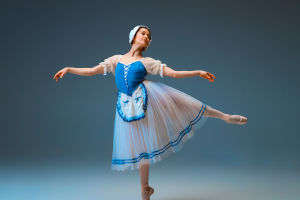Have you ever imagined creating your own beautiful ceramic pieces at home? A handcrafted ceramic set for painting is the perfect way to bring that idea to life.
With the right set, anyone can enjoy hours of creativity, experimenting with colors to turn simple ceramics into stunning art. Today, we'll dive into what makes these sets special and how they can help us explore our artistic side.
What's Included in a Handcrafted Ceramic Set
A good ceramic painting set usually comes with everything we need to start. This includes unpainted ceramic items such as cups, plates, bowls, or small figurines. Each piece is handcrafted, giving it a unique shape and texture.
Along with the ceramics, the set often contains brushes of different sizes, a variety of paints or pigments, a palette for mixing colors, and sometimes even decorative accessories like metallic powders or stencils. Having all tools in one set makes the process smooth and enjoyable.
Choosing the Right Brushes
Brushes are key to painting ceramics well. A typical set includes a mix of thick and fine brushes. Thick brushes help cover large areas quickly, while fine brushes allow us to add details, patterns, or intricate designs.
Since we are painting on a smooth ceramic surface, brushes with soft bristles work best, ensuring that each mark is precise and colors flow evenly.
Selecting Colors and Paints
The paint included in handcrafted ceramic sets is specially formulated to adhere to ceramics and stay vibrant after firing. Some sets use water-based pigments that are easy to blend, while others include porcelain-specific paints for professional results.
We can experiment with layering colors, mixing shades on the palette, or creating gradients to make our ceramics visually striking. The freedom to mix and match colors is what makes each piece unique.
Using Accessories for Extra Creativity
Many sets include small accessories like stencils, metallic powders, or fine markers. These help us add patterns, highlights, or textures that make a piece stand out. For example, we can use a stencil to create repeating shapes, or metallic powder to add a subtle shimmer.
Using these tools creatively allows us to push the limits of our imagination and achieve professional-looking results even at home.
Tips for Beginners
For those new to ceramic painting, it's important to start simple. We can begin with a single plate or cup, focusing on basic color combinations and patterns. Layering colors carefully and letting each layer dry before applying the next prevents smudging.
Cleaning brushes thoroughly after each use keeps them in good condition, and practicing on small pieces before tackling larger items helps build confidence.
Firing and Finishing
After painting, many ceramic pieces need to be fired in a kiln or baked according to the paint instructions. This step ensures colors become permanent and the surface is smooth and glossy. Some sets provide paints that cure without firing, allowing us to enjoy our creations immediately.
Either way, finishing the pieces properly makes them durable and ready for display or daily use.
Why Handcrafted Sets Are Special
Handcrafted ceramic sets stand out because each item is slightly different. The subtle curves, textures, and natural imperfections give us a canvas that feels personal and artistic. Painting handcrafted ceramics is more than a hobby—it is both relaxing and a way to express creativity.
Creative Joy
Lykkers, painting with a handcrafted ceramic set is more than just an activity—it's a journey of creativity and self-expression. By exploring different tools, colors, and techniques, we can turn simple ceramics into beautiful, personalized works of art.
With each brush movement, we discover new possibilities and enjoy the satisfaction of bringing our ideas to life. Let's grab our brushes, dive into the colors, and celebrate every moment of creating something truly unique together!
According to ceramic artist and educator Jane Davies, exploring handmade ceramics allows people to connect with both creativity and mindfulness in a rewarding way.
21 Tips for Brush Glazing - Pottery Glazing Techniques
Video by Pottery Crafters


